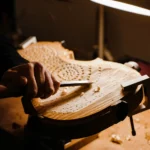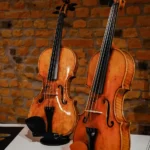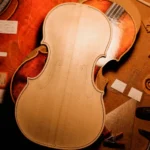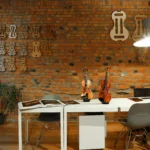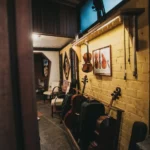6 French Bow Makers from History You must Meet
Back to BlogThe history of bow making is an amazing topic and with many interesting facts! But how much do you know of the skillful bow makers who developed and shaped our modern violin bow as it is today?
The French bow-making tradition has its roots in Mirecourt, a small town in the Vosgian mountains in France. The early French bow makers discovered that Pernambuco wood brought to France for textile dyeing was just right for making bows.
Most of the finest bow makers of 19th century Paris were originally from the town of Mirecourt, who later made their way to Paris. The modern form of the bow that we use today was brought into its ultimate shape by François Tourte in the 19th century.
The Skillful Violin French Bow Makers from History
Jean Dominique Adam (1795 – 1842)
He was the son of Jean Adam and, most likely, was his apprentice. Adam produced work in the style of Etienne Pajeot, although his output was limited. His bows are stamped ‘Adam.’ In some cases, bows were made in collaboration with Jean Adam, and some of these were made before 1842.
François Xavier Tourte ‘le Jeune’ (1748 – 1835)
François Xavier Tourte flourished during the early to mid-1700s. He is often referred to as Le Jeune (Tourte ‘le Jeune’ to distinguish him from his older brother Nicolas Léonard Tourte) and is most famous for his viola, cello, and violin bows. Tourte is considered by many to be one of the finest bow makers of all time.
Tourte was a clockmaker who turned his hand to bow making around 1774-5. Proof of the existence of Tourte’s independent workshop on the Quai de l’Ecole dates from 1800, but there’s some evidence of collaboration with his brother prior to that date.
The years during which Tourte was active were a period of intense change in the world of bow making, as modifications in players’ techniques and the expansion of the tonal palette demanded parallel innovations in the tools used for sound creation.
Charles Nicolas Bazin (1847 – 1915)
Bazin was born in Mirecourt in 1848 and, by 1865, had inherited the family workshop from his father. Charles Nicolas was only 18 but had been thoroughly trained by his father and the business flourished under his leadership. He supplied bows to many shops in Paris, including Joseph Hel and Collin-Mézin. Over the next four decades, many of Mirecourt’s finest makers worked for Bazin, producing thousands of high-quality bows. In 1907 Bazin retired, and his son Charles Louis took over as leader, while Charles Nicolas remained a presence in the shop until he died in 1915.
Charles Alfred Bazin (1907 – 1987)
Charles learned the art of bow-making from his father. He worked in Mirecourt and served as the shop director after his father retired. In 1952, he was given the title of master bow-maker by L’Académie d’Archers but continued working with only one assistant.
While many contemporary bow makers would spend time leaving their family business to work for other companies, Bazin refused to do so and remained one of the last few craftspeople who could produce such fine instruments. Earlier in his career, he had made heavier bows, but after age 60, they became heavier still. At this time also, his choice of materials changed from pernambuco wood to basswood.
Léon Bernardel (1853 – 1931)
The Bow and Violin maker was born in Paris and was the son and pupil of Ernest Auguste. Bernardel first studied under Justin Derazey, before joining the firm of Gand & Bernadel Frères in 1899. He later opened his own establishment at 40 rue du Faubourg Poissonnière with his son, Leon Bernardel II. In 1900, he won a bronze medal at the Exposition Universelle.
Charles Jean-Baptiste Collin-Mézin père (1841 – 1923)
Charles Collin dit Mezin moved to Paris and became one of the leading French luthiers of the 19th century, specializing in 17th-century models, though he occasionally used Amati and Stradivari forms. He won medals at three Paris exhibitions and was a favorite of many prominent players, including Joseph Joachim.
There are many other excellent bow makers in history, and today we brought you just a few of them. And I’m sure if you search the internet, you’ll be amazed by the talent of those luthiers. Tarisio’s archive is full of those masters that had such an important part in violin bow-making.





